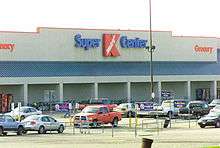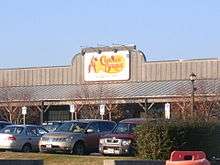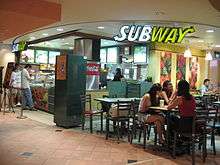Chain store


Chain store(s) or retail chain are retail outlets that share a brand and central management, and usually have standardized business methods and practices. In retail, dining, and many service categories, chain businesses have come to dominate the market in many parts of the world. A franchise retail establishment is one form of chain store. In 2004, the world's largest retail chain, Wal-Mart, became the world's largest corporation based on gross sales.
Opposition
The displacement of independent businesses by chains has sparked increased collaboration among independent businesses and communities to prevent chain proliferation. These efforts include community-based organizing through Independent Business Alliances (in the U.S. and Canada) and "buy local" campaigns. In the U.S., trade organizations such as the American Booksellers Association and American Specialty Toy Retailers do national promotion and advocacy. NGOs like the New Rules Project and New Economics Foundation provide research and tools for pro-independent business education and policy while the American Independent Business Alliance provides direct assistance for community-level organizing.
History
In the U.S., chain stores began with the founding of The Great Atlantic & Pacific Tea Company (A&P) in 1859. By the early 1920s, the U.S. boasted three national chains: A&P, Woolworth's, and United Cigar Stores.[1] By the 1930s, chain stores had come of age, and stopped increasing their total market share. Court decisions against the chains' price-cutting appeared as early as 1906, and laws against chain stores began in the 1920s, along with legal countermeasures by chain-store groups.[2]
Restaurant chains
A restaurant chain is a set of related restaurants in many different locations that are either under shared corporate ownership (e.g., McDonald's in the U.S.) or franchising agreements. Typically, the restaurants within a chain are built to a standard format through architectural prototype development and offer a standard menu and/or services.


Fast food restaurants are the most common, but sit-down restaurant chains (such as Timber Lodge Steakhouse, Outback Steakhouse, T.G.I. Friday's, Legal Sea Foods, Ruby Tuesday and Olive Garden) also exist. Restaurant chains are often found near highways, shopping malls and tourist areas.
Regulation and exclusion
A variety of small towns in the United States whose residents wish to retain their distinctive character—such as Provincetown, Massachusetts and other Cape Cod villages; McCall, Idaho; Port Townsend, Washington; Ogunquit, Maine; and Carmel-by-the-Sea, California—closely regulate, even exclude, chain stores. They don't exclude the chain itself, only the standardized formula the chain uses. For example, there could often be a restaurant owned by McDonald's that sells hamburgers, but not the formula franchise operation with the golden arches and standardized menu, uniforms, and procedures. The reason these towns regulate chain stores is to protect independent businesses from competition.[3]
See also
- List of bookstore chains
- List of Canadian clothing store chains
- List of current and defunct clothing & footwear stores in the United Kingdom
- List of restaurant chains
- List of supermarket chains
References
| Wikimedia Commons has media related to Chain stores. |
- ↑ Hayward WS, White P, Fleek HS, Mac Intyre H (1922). "The chain store field". Chain Stores: Their Management and Operation. New York: McGraw-Hill. pp. 16–31. OCLC 255149441.
- ↑ Lebhar GM (1952). Chain Stores in America: 1859–1950. New York: Chain Store Publishing Corp. OCLC 243136.
- ↑ "Cape Cod Residents Keep the Chain Stores Out" article by Beth Greenfield June 8, 2010
Further reading
- Carroll, Glenn R., and Magnus Thor Torfason. "Restaurant Organizational Forms and Community in the US in 2005." City & Community 10#1 (2011): 1-24.
- Ingram, Paul, and Hayagreeva Rao. "Store Wars: The Enactment and Repeal of Anti‐Chain‐Store Legislation in America." American Journal of Sociology 110#2 (2004): 446-487.
- Lebhar, Godfrey Montague, and W. C. Shaw. Chain stores in America, 1859-1962 (Chain Store Publishing Corporation, 1963).
- Matsunaga, Louella. ;;The changing face of Japanese retail: Working in a chain store (Routledge, 2012).
- Newman, Benjamin J., and John V. Kane. "Backlash against the 'Big Box', Local Small Business and Public Opinion toward Business Corporations." Public Opinion Quarterly 78#4 (2014): 984-1002.
- Phillips, Charles F. "The Chain Store in the United States and Canada," American Economic Review 27#1 (1937), pp. 87-95 in JSTOR
- Schragger, Richard. "The Anti-Chain Store Movement, Localist Ideology, and the Remnants of the Progressive Constitution, 1920-1940." Iowa Law Review 90 (2005): 1011+.
- Scroop, Daniel. "The anti-chain store movement and the politics of consumption." American Quarterly 60#4 (2008): 925-949.
- Winship, Janice. "Culture of restraint: the British chain store 1920–39." Commercial Cultures: Economies, Practices, Spaces 31 (2000).